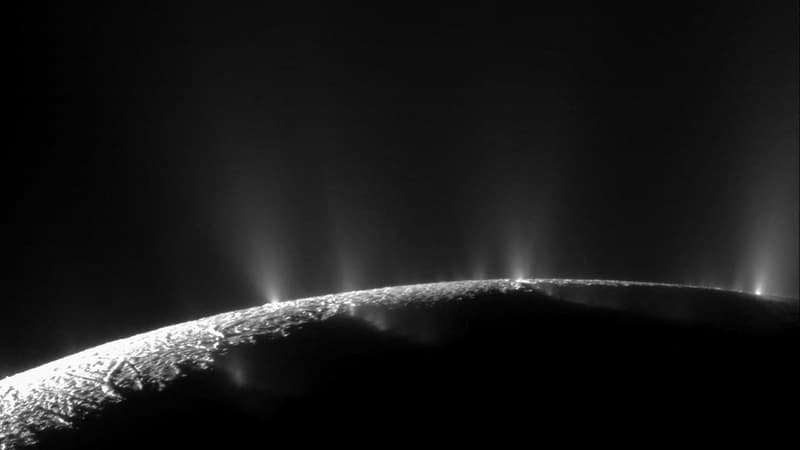The long-running search for extraterrestrial life just got a big boost: Phosphorus, a key element for life, has been discovered in an ocean beneath the icy surface of Saturn’s moon Enceladus.
The discovery, based on the study of data collected by NASA’s Cassini probe, was published this Wednesday in the prestigious magazine Nature.
The Cassini probe explored Saturn and its rings and moons from 2004 until its destruction in the gas giant planet’s atmosphere in 2017.
“This is an incredible discovery for astrobiology,” said Christopher Glein of the Southwest Research Institute, one of the paper’s co-authors. “We found abundant phosphorus in ice plume samples expelled from the subterranean ocean.”
First discovery “somewhere else than on Earth”
Geysers at Enceladus’ south pole spew very fine particles of ice into space that feed Saturn’s E ring, the outermost and thinnest of the giant planet.
Scientists had already discovered minerals and organic compounds in the ice particles spewed out by Enceladus, but not phosphorus, an essential building block of DNA and RNA that is also found in the bones and teeth of humans and animals, and even in oceanic plankton. . In fact, life as we know it would not be possible without phosphorus.
Geochemical models anticipated the presence of phosphorus in these particles, a prediction published in an earlier paper but not yet confirmed, Christopher Glein noted.
“This is the first time that this essential element has been discovered in an ocean other than on Earth,” added the study’s lead author, Frank Postberg, a planetary scientist at Freie Universitat Berlin, quoted in a NASA statement.
For this discovery, the authors reviewed data collected by the Cassini spacecraft’s Cosmic Dust Analyzer instrument. They confirmed the results by performing laboratory experiments to show that Enceladus’ ocean contained phosphorus in various water-soluble forms.
Water ice deposits on the moons
Over the past 25 years, planetary scientists have discovered that there are many worlds with oceans under a surface layer of ice in our solar system.
There is, for example, in Europa, a moon of Jupiter; on Titan, Saturn’s largest moon, and even on the dwarf planet Pluto.
Planets that, like Earth, have oceans on their surfaces must be at a suitable distance from their star to maintain the temperatures necessary for life. The discovery of worlds with underground oceans increases the number of planets that could be habitable.
“With this discovery, it is now known that the ocean on Enceladus satisfies what is generally considered the first necessary condition for life,” said Christopher Glein. “The next step is clear: we must go back to Enceladus to see if the habitable ocean is actually inhabited.”
Source: BFM TV


